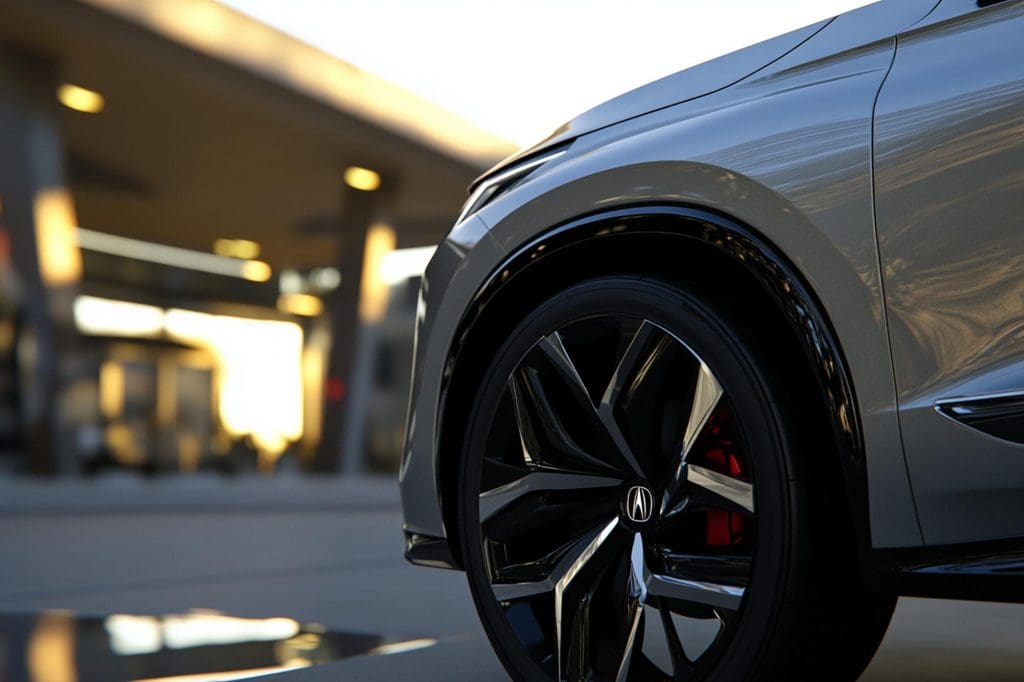EV tyres aren’t just “black rings.” They’re engineered to handle extra weight, instant torque, lower cabin noise and ultra-low rolling resistance—directly affecting your range, safety and comfort. Here’s what makes them different and how to choose the right set.
Why EV Tyres Matter
Putting the wrong tyres on an electric car is like wearing running shoes to a black-tie dinner—they’ll work, but they compromise everything. EV-specific tyres protect your range, keep things quiet and help your car feel planted and safe.
Quick wins
- Range: Low rolling resistance can add 10–15 miles per charge.
- Noise: Acoustic foam + tread design hush road roar.
- Safety: Reinforced construction manages EV weight and torque.
The four reasons EV tyres are different
1) Weight
Batteries add 300–500 kg versus comparable ICE models. Look for a higher load index and reinforced sidewalls to handle cornering forces and passengers. Pair with the right pressures (see your door-jamb label).
2) Instant torque
EVs deliver 100% torque from zero. Standard compounds can wear fast; EV tyres use durable rubber blends and construction to resist premature wear under repeated launches.
3) Cabin noise
With no engine masking sound, tyre roar dominates. EV patterns and optional acoustic foam liners knock back resonance for that serene EV glide.
4) Range (rolling resistance)
Rolling resistance is the enemy of efficiency. EV-optimised compounds and belts lower energy loss so the motor works less. Expect real-world gains of ~5–10% efficiency versus a poor choice.
What to look for when buying EV tyres
Manufacturer markings
- Pirelli Elect
- Michelin E-Primacy / Pilot Sport EV
- Hankook iON range
These lines are engineered for EV demands from day one.
UK tyre label “cheat sheet”
- Efficiency (A–E): Aim for A to maximise range.
- Exterior noise (dB): Lower is quieter; fewer “soundwaves” is better.
- Wet grip (A–E): Prioritise safety—don’t trade away stopping distance.
Official guidance: GOV.UK Tyre labelling · EU tyre label info
| Priority | What to choose | Why |
|---|---|---|
| Max range | Label A efficiency, low noise | Lower rolling resistance = more miles |
| Quiet comfort | Acoustic foam + low dB rating | Preserves EV hush on motorways |
| Wet-weather safety | Wet grip A or B | Shorter stopping distances in rain |
| Performance EVs | EV-marked UHP tyres | Manages torque without rapid wear |
Can I fit “normal” tyres on my EV?
Short answer: They’ll fit, but don’t.
- Reduced range: +5–10% energy use from higher rolling resistance.
- Faster wear: Compounds aren’t built for instant torque.
- More noise: Louder cabin on A-roads and motorways.
- Sloppier handling: Softer sidewalls struggle with EV mass.
Our verdict: an essential investment
Treat tyres like a core EV component—just like the battery and motor. The factory fitment was chosen to balance range, safety and comfort. When it’s time to replace, stick with high-quality, EV-specific rubber.
Ready to plan ownership like a pro? Use the ONEEV app to find reliable charge points, keep costs predictable, and earn lifestyle rewards. Explore more guides in our EV Knowledge Hub and see ONEEV Rewards.
Further reading: Michelin: Tyres for EVs
